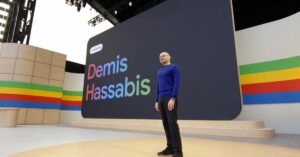Perplexity CEO: ChatGPT, Gemini, and Grok Currently Have Similarities

Understanding AI Models Like ChatGPT, Gemini, and Grok
AI technology has made remarkable strides in recent years, leading to the emergence of various conversational agents. Among these, ChatGPT, Gemini, and Grok are notable examples that have generated significant interest. Despite their unique branding and features, these models share many similarities in how they function and apply artificial intelligence. Let’s take a closer look at these systems and their commonalities.
What Are ChatGPT, Gemini, and Grok?
ChatGPT
ChatGPT is developed by OpenAI, a well-known organization in AI research. It’s designed to understand and generate human-like text based on user input. This model utilizes advanced machine learning techniques to provide coherent responses, making it ideal for a variety of applications, including customer service, content creation, and personal assistance.
Gemini
Gemini, developed by Google DeepMind, is another AI model aimed at enhancing user interaction through natural language processing. While the specifics of Gemini’s architecture and capabilities may differ, it shares the goal of engaging users in a conversational manner. Google has been investing heavily in AI, and Gemini is part of its broader strategy to leverage machine learning for improved user experiences.
Grok
Grok is developed by xAI, a company founded by Elon Musk. Similar to ChatGPT and Gemini, Grok aims to provide intuitive conversational abilities. It leverages AI technology to engage users, enabling them to receive real-time answers and assistance in various domains, from casual questions to more complex inquiries.
Similarities Between the Models
Natural Language Processing (NLP)
All three AI models—ChatGPT, Gemini, and Grok—utilize Natural Language Processing (NLP) as their backbone. This technology allows them to understand and interpret human language effectively. They can analyze context, generate relevant responses, and even engage in follow-up questions to maintain a natural flow of conversation.
User Interaction
Engagement with users is central to the design of these models. Each one aims to create a seamless conversational experience, allowing for back-and-forth dialogue. This capability is particularly important in applications where users expect immediate and contextually-relevant responses.
Learning from Data
Machine learning is at the heart of how these models improve over time. They analyze vast amounts of data to learn patterns, language structures, and contextual meanings. By continuously updating their algorithms, they enhance their understanding of human communication, making them more effective in delivering accurate responses.
Key Differences
While these models share many characteristics, there are notable differences that set them apart.
Performance and Speed
Each model displays varying levels of performance and speed. For instance, ChatGPT is known for its rich responses and conversational depth, while Gemini may excel in specific tasks where Google’s data resources can enhance performance. Grok, on the other hand, focuses on integrating real-time data to provide answers swiftly.
Application Focus
The intended use cases can differ among these models. ChatGPT is often used for creative and educational purposes, while Gemini is aimed at enhancing Google’s suite of products and services. Grok is designed to integrate seamlessly with various platforms, providing users with customized experiences across different interfaces.
Development and Updates
The organizations behind these models have different approaches to development and updates. OpenAI continuously enhances ChatGPT based on user feedback and engagement data. Google updates Gemini in alignment with its broader technological ecosystem, while xAI’s Grok is shaped by Musk’s vision of AI capabilities.
Conclusion
The advances in AI conversational agents like ChatGPT, Gemini, and Grok highlight the rapid evolution of technology in this field. Understanding their similarities and differences can help users choose the right model for their needs, whether for casual conversation, professional use, or integration into existing systems.






